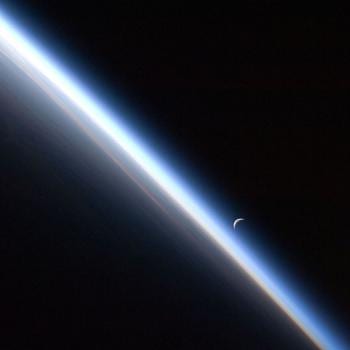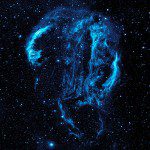
(Public domain government image)
Als Gregor Samsa eines Morgens aus unruhigen Träumen erwachte, fand er sich in seinem Bett zu einem ungeheueren Ungeziefer verwandelt.
So runs the famous opening line of Franz Kafka’s 1915 novella Die Verwandlung (English, The Metamorphosis):
One morning, as Gregor Samsa awoke from restless dreams, he discovered that he had been transformed in his bed into a monstrous verminous bug.
The story continues from that very striking first sentence. Gregor’s transformed state is treated as an unfortunate development that clouds his family’s financial prospect and frightens off their housekeeper and his boss, but not as the astonishingly freakish and unprecedented occurrence that it would be in the world of quotidian reality as we all know it.
Which brings up an intriguing question: Granted that Gregor Samsa’s metamorphosis is . . . well, Kafkaesque, why do we live in a world where we know that such things can’t happen? Why is the universe law-like? Why is it rational and predictable?
This is related to the question raised by the Hungarian-American Nobel laureate physicist Eugen Wigner (1902-1995) in his important 1960 paper “The Unreasonable Effectiveness of Mathematics in the Natural Sciences”:
The miracle of the appropriateness of the language of mathematics for the formulation of the laws of physics is a wonderful gift which we neither understand nor deserve. We should be grateful for it and hope that it will remain valid in future research and that it will extend, for better or for worse, to our pleasure, even though perhaps also to our bafflement, to wide branches of learning.
***
With that in mind, I share a relevant passage that I noted in Geraint F. Lewis and Luke A. Barnes, A Fortunate Universe: Life in a Finely Tuned Cosmos (Cambridge: Cambridge University Press, 2016):
Brian Schmidt, of the Australian National University in Canberra, provided the Foreword to the book. Schmidt was the co-winner, with Saul Perlmutter and Adam Riess, of the 2011 Nobel Prize in Physics for their work in providing evidence that the expansion of the universe is accelerating. Here is something of what Professor Schmidt has to say:
Like a Bach fugue, the Universe has a beautiful elegance about it, governed by laws whose mathematical precision is meted out to the metronome of time. These equations of physics are finely balanced, with the constraints of nature that underpin the equations tuned to values that allow our remarkable Universe to exist in a form where we, humanity, can study it. A slight change to these constants, and poof, in a puff of gedanken experimentation, we have a cosmos where atoms cease to be, or where planets are unable to form. We seem to truly be fortunate to be part of Our Universe. . . .
On your journey with Geraint and Luke, you will see that humanity appears to be part of a remarkable set of circumstances involving a special time around a special planet, which orbits a special star, all within a specially constructed Universe. It is this set of conditions that has allowed humans to ponder our place in space and time. I have no idea why we are here, but I do know the Universe is beautiful. (xi-xii)












